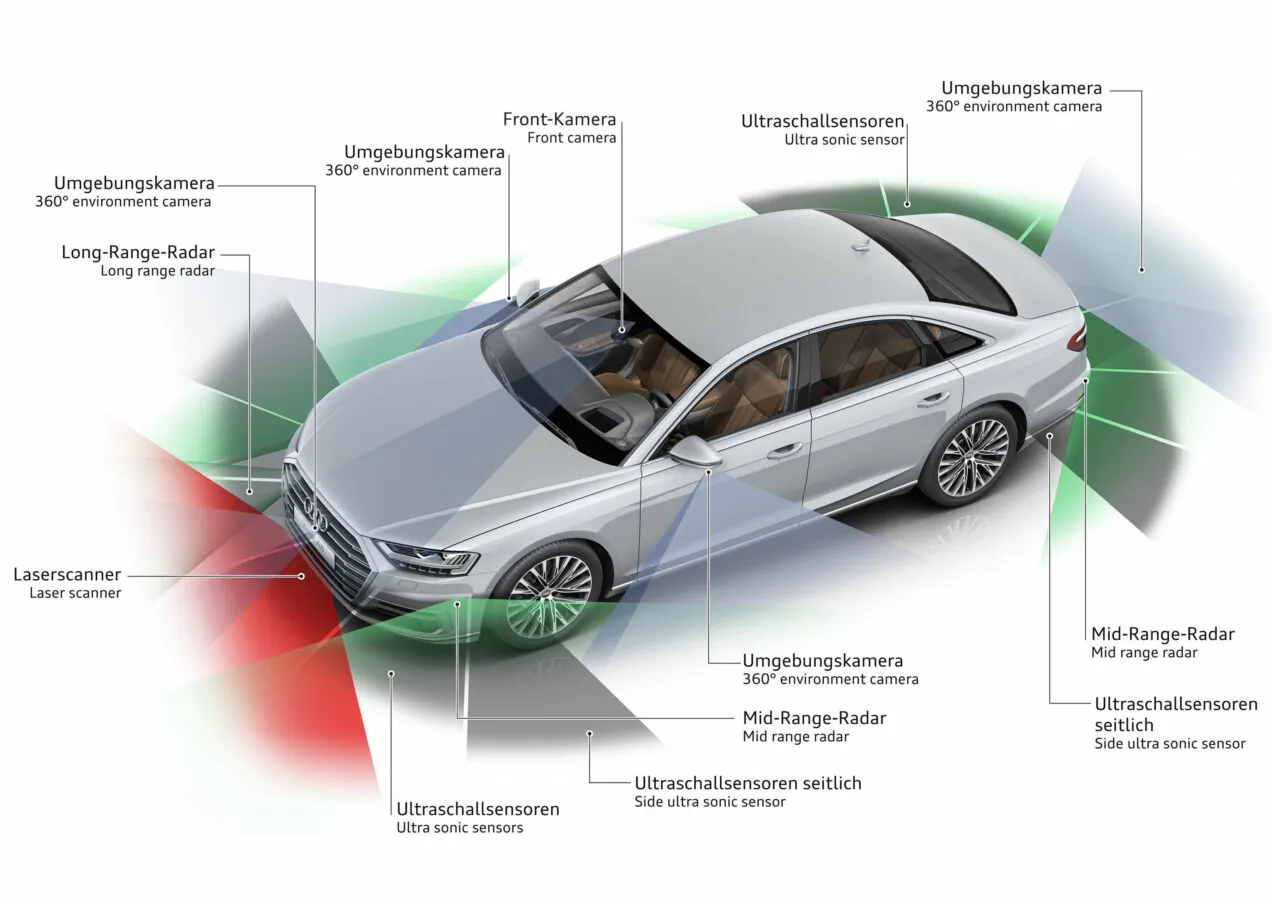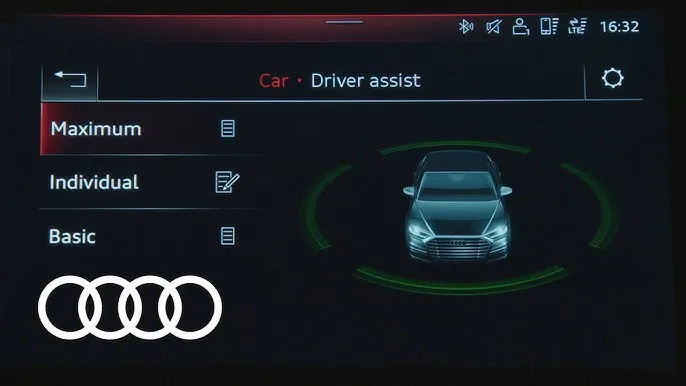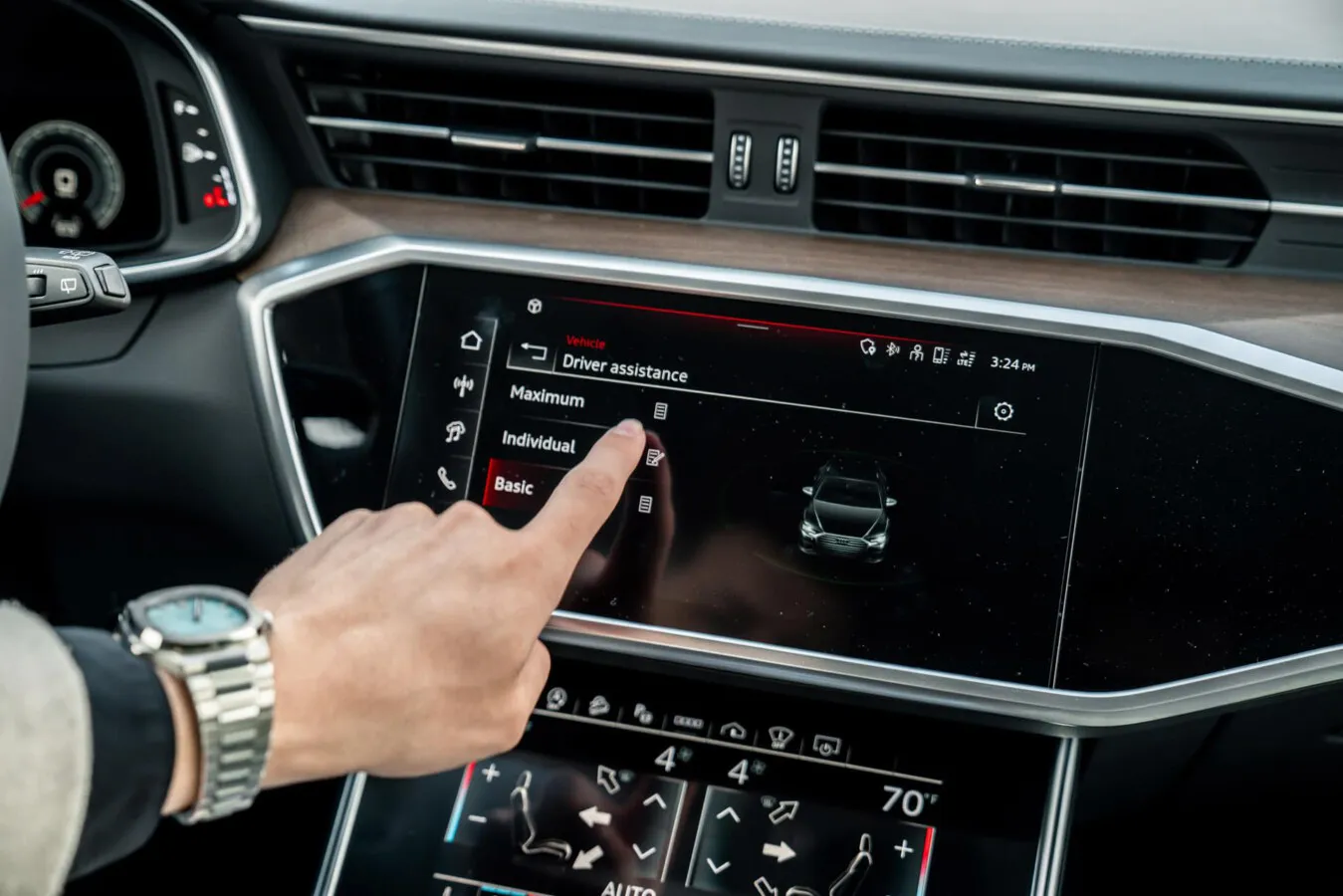The evolution of automotive technology has ushered in an era of Advanced Driver Assistance Systems (ADAS), which enhance safety and driving experiences. Audi, a pioneer in this domain, has meticulously integrated sophisticated ADAS features into their vehicles, which rely heavily on precision calibration and maintenance. This guide aims to equip owners and automotive professionals with a comprehensive understanding of Audi’s ADAS, emphasizing the importance of calibration and ongoing care to maximize functionality, safety, and performance.
Understanding Audi’s Advanced Driver Assistance Systems (ADAS)
Audi’s ADAS technology encompasses a spectrum of functions designed to assist drivers, augmenting the vehicle’s capabilities and improving road safety. These features leverage an intricate integration of advanced sensors, cameras, and radar systems to interpret the driving environment. Core functionalities of the ADAS include:
- Adaptive Cruise Control (ACC): Automatically adjusts the vehicle’s speed to maintain a pre-set distance from the car ahead, enhancing comfort during long drives.
- Lane Keeping Assist (LKA): Detects lane markings and helps keep the vehicle centered in its lane, mitigating the risk of accidental lane departures.
- Automatic Emergency Braking (AEB): Monitors for potential collisions and applies brakes automatically if an imminent impact is detected.
- Traffic Sign Recognition (TSR): Reads road signs and displays essential information to the driver, thereby fostering awareness of traffic laws and conditions.
While these cutting-edge systems significantly bolster safety and convenience, their effectiveness hinges on meticulous calibration. This process ensures that sensors are correctly aligned, allowing for accurate data interpretation and safe car operation. Misalignment can lead to system malfunctions, increasing risks on the road.

The Importance of Calibration
Calibration is the process of optimizing the alignment of various sensors and cameras within an ADAS to guarantee accurate interpretative responses to the surrounding environment. Without proper calibration, even the most advanced systems may fail at critical moments, posing a risk to both the vehicle occupants and others on the road.
Key Considerations for Calibration
- Why Calibration Matters: The precise alignment of sensors is crucial for safe ADAS functionality. For example, a misaligned front camera may fail to detect pedestrians in time, rendering the Automatic Emergency Braking system ineffective.
- When Calibration is Necessary: Calibration is required under several circumstances, including:
- After any collision, major or minor
- Changes in tire dimensions
- The replacement of sensors or their mounting components
- Routine maintenance that may affect the vehicle’s structure, such as suspension work
- Types of Calibration: Calibration can be categorized into static and dynamic forms:
- Static Calibration: Conducted in a controlled environment using specialized equipment to align sensors accurately and establish baseline system performance.
- Dynamic Calibration: Involves real-world driving after the static calibration, permitting the system to adjust and fine-tune its sensor readings based on actual driving conditions.
Proper calibration surpasses mere functionality. It plays an essential role in maintaining compliance with the manufacturer’s specifications, ensuring the vehicle meets mandated safety standards.

The Calibration Process
Understanding the calibration process is paramount for Audi owners who wish to maintain their vehicles effectively. Here’s a thorough breakdown of the calibration procedure:
Pre-Calibration Checks
Prior to undertaking the calibration, several vital checks should be performed:
- Level Surface: The vehicle must be parked on flat ground to ensure accurate alignment.
- Tire Pressure: Confirm that all tires are inflated to the recommended levels; incorrect tire pressure can distort vehicle dimensions and lead to calibration discrepancies.
- Sensor Cleanliness: Inspect sensors and cameras for dirt or obstructions, as debris can severely inhibit their function.
Static Calibration Steps
- Initialization: Begin by activating the vehicle’s ignition and the specific calibration modes through the Audi Multi Media Interface (MMI).
- Target Placement: Set up a calibration target, as provided with your calibration equipment, at the specified distance from the front camera.
- Calibration Execution: The system will analyze its surroundings and autonomously align the cameras and sensors while digitally saving the calibration data.
Dynamic Calibration Steps
Following static calibration, dynamic calibration fine-tunes the systems:
- Real-World Driving: Drive the vehicle along predetermined routes that simulate regular driving conditions, including highway stretches, urban scenarios, and swift maneuvers.
- Feedback and Adjustment: The ADAS will continuously gather data to refine its calibration, ensuring sensors respond correctly to everyday driving situations.
Post-Calibration Verification
Once both calibration processes conclude, a comprehensive diagnostic check should be conducted to guarantee that all systems function properly. Look for fault codes or system alerts on the dashboard, as these could signal underlying issues requiring attention.
Ongoing Care and Maintenance of ADAS
Beyond calibration, ongoing care is crucial for the sustained functionality of Audi’s ADAS. Below are some essential maintenance considerations:
Routine Inspections
Regular inspections help identify issues proactively. Schedule inspections to verify:
- Sensor alignment
- Cleanliness of sensors and cameras
- Availability of software updates for control units
Cleaning and Upkeep
Maintaining the clarity of camera and sensor lenses is vital. Here are recommended practices:
- Regular Washing: During vehicle washes, ensure technicians spotlight the areas where sensors and cameras reside. Avoid harsh chemicals that could damage delicate components.
- DIY Cleaning: If cleaning independently, use a soft microfiber cloth alongside mild soap solutions to gently wipe down the surfaces, avoiding abrasions that could impair functionality.
Software Updates
Stay informed about firmware and software updates from Audi that enhance your vehicle’s systems. These updates rectify bugs, optimize performance, and may introduce new functionality.
Monitoring Warning Lights
Closely monitor dashboard alerts related to your ADAS. Should the ADAS warning light illuminate, seek professional assessment promptly. Delaying addressing these warnings can compromise functional safety features.

The Role of Qualified Technicians
Proficient technicians play an indispensable role in the calibration and maintenance of the ADAS. Audi-certified technicians possess specific training and expertise that ensure:
- Expert Knowledge: Technicians bring along mechanical insight combined with in-depth understanding of ADAS technology, aiding in effective troubleshooting.
- Advanced Diagnostic Tools: Certified technicians leverage sophisticated diagnostic instruments to evaluate sensor conditions quickly and accurately.
- Compliance with OEM Standards: Their proficiency guarantees maintenance adheres to Audi’s original equipment manufacturer (OEM) guidelines, preserving safety and performance standards.
Future Trends in ADAS Calibration and Maintenance
As technology continues to evolve, so do the mechanisms that regulate vehicle functionality. Here are trends likely to shape the future of ADAS:
- Integration of Machine Learning and AI: Incorporating machine learning and artificial intelligence is set to refine ADAS operations, improving calibration processes and facilitating real-time adjustments based on driving behaviors.
- Growing Regulations: As ADAS technologies gain prevalence, anticipate stricter regulations regarding calibration protocols and maintenance requirements, nurturing more standardized practices across the automotive industry.
- Increased Consumer Awareness: As car owners become more informed about ADAS features, the demand for transparency in service practices will rise, compelling service providers to adopt clearer communication strategies.
- Innovations in Connectivity: Advances in vehicle connectivity, including directly sending diagnostic information to service centers, promise quicker issue identification and more efficient maintenance scheduling.
Conclusion
The intertwined relationship between Audi’s Advanced Driver Assistance Systems and effective calibration alongside diligent maintenance ensures optimal performance, enriching the driving experience and safeguarding vehicle integrity. As passionate owners of Audi vehicles, embracing regular care principles elevates not only your investment but also contributes to fostering a safer road environment for all.
Incorporating insights from this guide into daily vehicle care allows Audi owners to fully embrace the synergy of luxury, technology, and safety offered by these advanced systems. As you journey forward, appreciate that your driving experience embodies a masterpiece of engineering that merits careful attention and respectful maintenance.
Should you seek further expertise on maintaining Audi’s ADAS systems, contact Drive In Motor Sports at Golf Course Rd, DLF Phase 5, Gurugram, at +91-93195-31279 or via email at [email protected]. Engage with specialists dedicated to luxury vehicles and opt for exceptional service devoted to your automobile’s needs.
